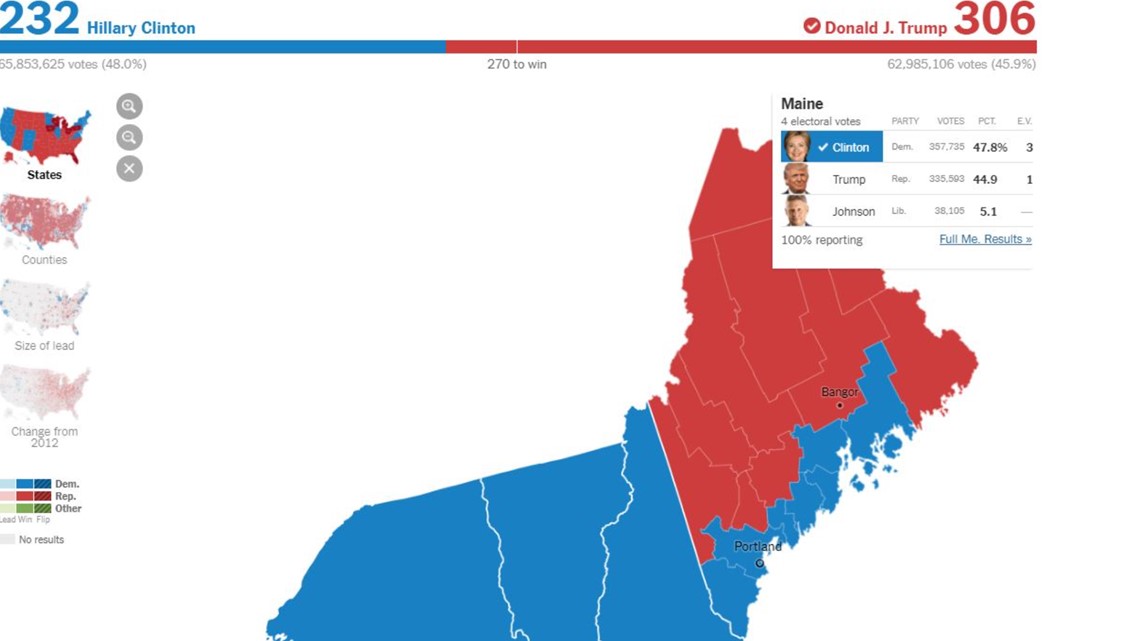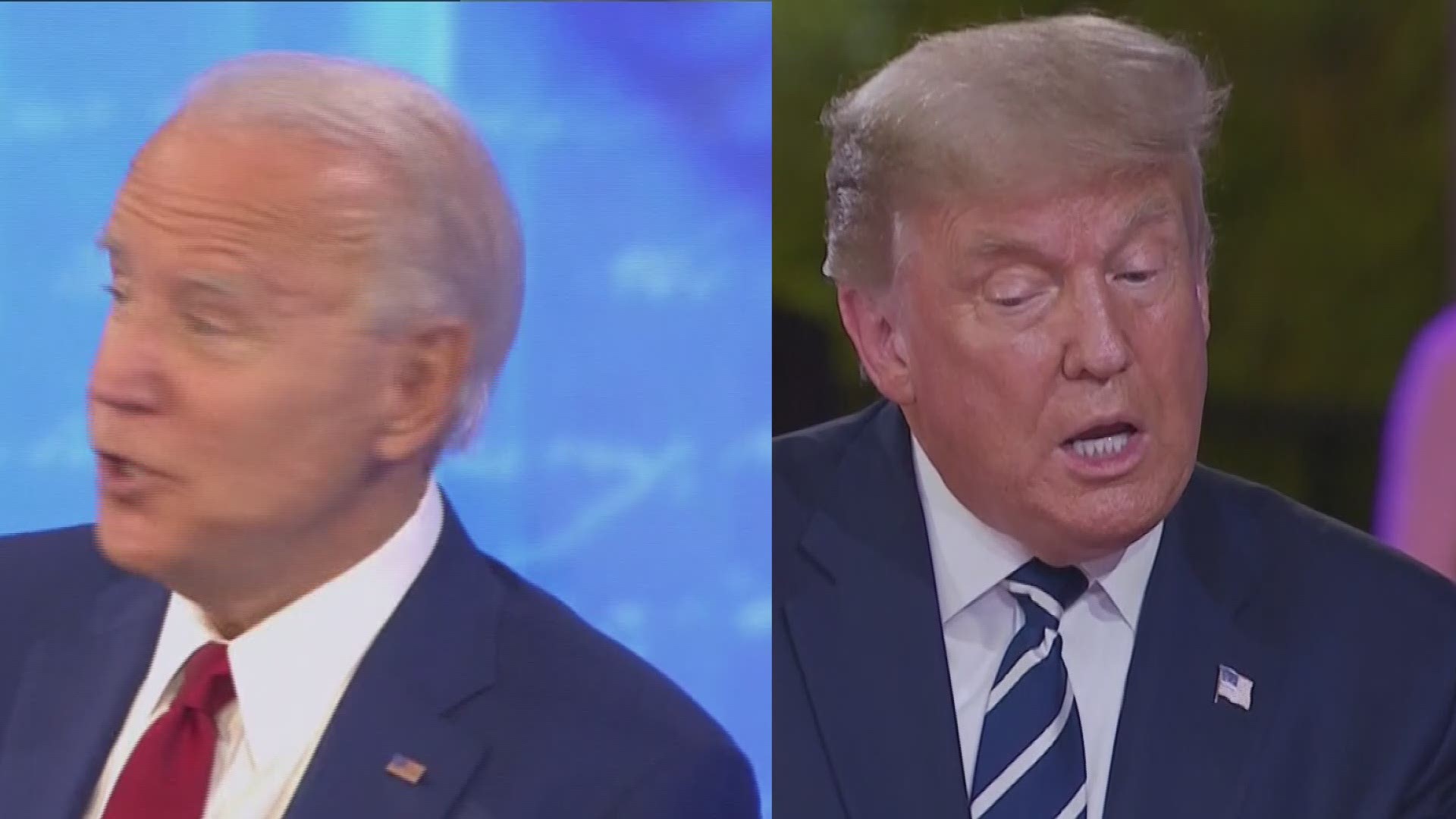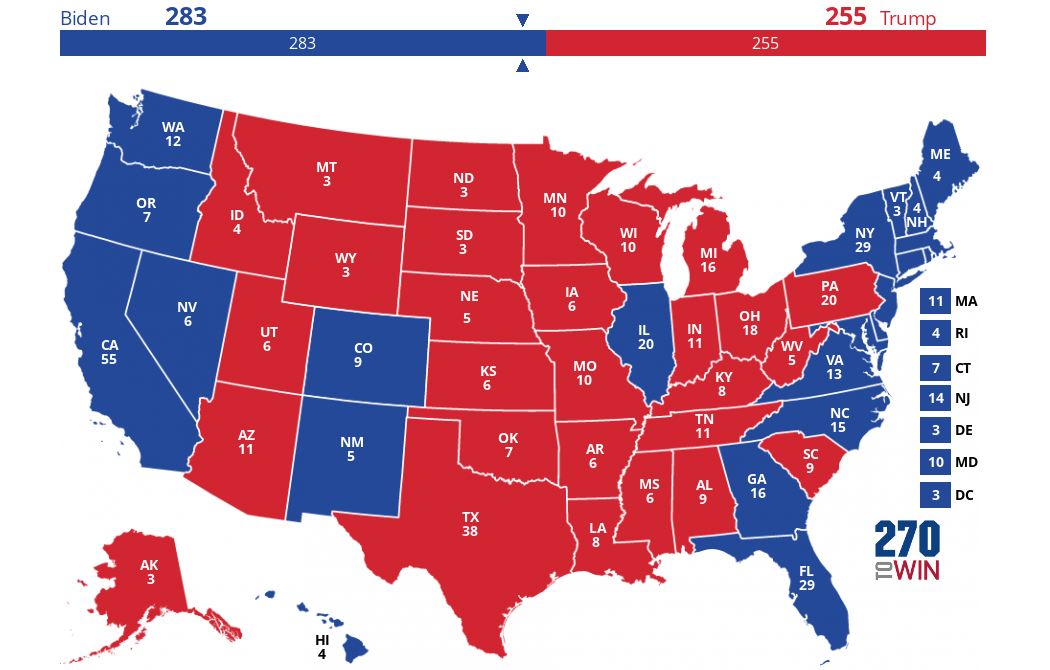The Electoral College explained
Maine is one of two states that splits its electoral votes—Maine has four. Here's how the electoral process works.

Maine is unique when it comes to General Elections—it’s one of just two states that doesn’t apply the “winner take all” method for the Electoral College. Instead, Maine’s four votes are split: two at-large electoral votes for the popular vote winner statewide, and one for each Congressional District. Sounds simple enough, but there’s more to this process. Why do we do it this way? How is the state divided? What are electoral votes and who decides them?
What is the Electoral College?
Let’s start with the basics. The Electoral College, which was established in Article II of the U.S. Constitution and later modified in the 12th and 23rd Amendments, is the body of electors chosen by each state to elect the president and vice president in General Elections. So, in the election, voters aren’t only casting their vote for the candidates, they’re also voting for the electors that will represent their state in voting for those candidates.
A candidate needs 270 electoral votes, a simple majority, to win.
The number of electoral votes a state has is based on the number of its U.S. Senators and U.S. House representatives. Each state has two senators, but the number of representatives a state has is based on population as determined in the census, which is why some states have more electoral votes than others.
The numbers vary widely across the U.S. because of this; California has the most electoral votes with 55, followed by Texas and Florida with 38 and 29 respectively, while smaller population states like Montana and Alaska have just three votes, for example.
Who are the 'electors'?
Electoral votes allotted to each state are not just numbers—they are the “electors” that will represent each state in voting for a candidate. The electors are chosen at the Parties' State Conventions before the election.
The electors are typically loyal supporters of their Party, but generally, they are free agents of sorts. There are 33 states, plus the District of Columbia, that require electors to vote based on the popular vote outcome— Maine is one of them. If an elector deviates in their vote, five states have penalties in place, while others have the option to cancel the deviant vote and replace the elector, which is what Maine does.
Whichever candidate wins the popular vote in the state, that party's electors will represent the state in the Electoral College. In Maine and Nebraska, this is where things differ.
The electors meet on the first Monday after the second Wednesday in December. In 2020, it will be on December 14. That's when they will cast their votes for president based on the outcomes in their states. Ultimately, it is a formality.
Maine's electoral votes
Maine, Hawaii, Idaho, New Hampshire, and Rhode Island each have four electoral votes, but the way Maine awards its votes is unique.
The Pine Tree State and Nebraska, appropriately nicknamed the Cornhusker State, are the only two states in the country that split their electoral votes. Nebraska has five electoral votes compared to Maine’s four.
Here's a breakdown of how Maine's votes are split up:
- 2 votes: Whoever wins the popular vote statewide.
- 1 vote: Whoever wins the popular vote in the 1st Congressional District.
- 1 vote: Whoever wins the popular vote in the 2nd Congressional District.
To help further explain the split of electoral votes in Vacationland, here is an example Mainers can relate too:
Imagine four people sitting at a table at your seafood restaurant of choice. Two people are married and share every meal, think of the married couple as the two electoral votes every state gives to the winner of the state's popular vote.
The other two at the table make their orders independently, think of them as representing each of Maine's congressional districts.
When the waitress asks what the table is thinking of ordering, three out of the four say, "I think I want a lobster roll." But the fourth adds, "I know I want the haddock."
The married couple orders the lobster roll because the majority of the table wants it.
Two orders for lobster = two electoral votes given to the winner of Maine's popular vote.
The third person at the table makes their own choice after the couple orders and they too decide on a lobster roll.
That's three orders for lobster, and an extra electoral vote awarded from one congressional district.
The fourth one at the table may not have the same food preference as the majority of the others, but their order matters too. So, they order the haddock as they wanted.
One order of haddock, and one electoral vote going to the candidate that did not win the popular vote.
Now, the waitress walks back to the kitchen and tells the cook, "the table of Maine will have three orders of lobster roll and one of haddock, huh, this is exactly like when Hillary Clinton and Donald Trump split the electoral votes in 2016."
Why does Maine split votes?
As with all states, Maine's electoral votes are based on the census. Maine passed a law in 1969 to return to the old ways of casting electoral votes by district, and since the 1972 election, that's how it's remained.
“It was written into statute that if a presidential candidate got a majority in one of the congressional districts but lost the statewide aggregate total that they could get an electoral vote," Secretary of State Matt Dunlap said.
Dunlap added states will write the law the way they want to, which is why Maine and Nebraska split their votes because they simply wanted to and could.
But why would Maine legislators want to split electoral votes?
If you take a look a the state's voting record, it makes sense, State Representative Josh Morris (R-District 75) said.
“To better reflect the kinds of voting patterns in people in the two districts...(people) in the northern part of the state have a different, may have a different preference than people in the southern part of the state as we’ve often seen in local and state elections," Morris said.
This trend is true in recent Presidential Elections. In 2016, Hillary Clinton won the popular vote in Maine by 3% which won her two electoral votes.


After those votes were allocated to Clinton, the remaining two electoral votes up for grabs were split because Clinton and Trump each won the popular vote in Maine's 2nd Congressional District, while Clinton won in the 1st District.
“The person who wins the presidential race in (the 1st Congressional District) gets one electoral vote and the person who wins the presidential vote in (the 2nd Congressional District) gets one electoral vote," Ryder Kessler, the Voter Protection Director for the Maine Democratic Party said.
This was the first time the votes were split since the process was implemented before the 1972 Presidential Election.
In 2016, Maine's First District went to Clinton after winning nearly 54% of the popular vote giving the Democratic candidate another electoral vote, bringing her total to three won in Maine.
The Second Congressional District, and the fourth and final electoral vote, went to President Trump after winning 51% of the popular vote there.
According to Ballotpedia, eight counties in Maine were pivot counties in the 2016 election. The popular vote in Androscoggin, Aroostook, Franklin, Kennebec, Oxford, Penobscot, Somerset, and Washington county went to Barack Obama in 2008 and 2012, but their popular votes went to Trump last election.
Heavy campaigning by the Trump administration during this election cycle hints at the importance of Maine's Second District. The President visited Puritan Medical Products in Guilford in June and his son Donald Jr. made a campaign stop this fall in Holden.
“[Splitting the electoral votes] gives Maine more of a chance to have voice in the selection of a president when you have some these close elections where literally one vote could make a difference," Morris added.
Nebraska has also split its electoral votes once since adopting this unique system in 1992. In 2008, the traditionally red voting state awarded John McCain four electoral votes, two for winning the statewide popular vote, and two for winning the popular vote in two districts. Barack Obama won the popular vote in the state's Second Congressional District giving him one electoral vote.
Maine's clout in the General Election Subtitle here
Maine may not have the numbers states like California or Florida have, but that doesn't mean the state—and its voters—aren't important to candidates.
Recent campaign stops by Massachusetts Senator Elizabeth Warren, Joe Biden's wife Dr. Jill Biden, and Trump's sons Eric and Don Jr. show both parties are taking an interest in Maine before Election Day.
Kessler added all this attention and focus on Maine is fueling the excitement for voters in the state.
“Maine people have tremendous enthusing to participate in this election and what we see to demonstrate that is the fact that 130,000 of them have already voted and 345,000 have been issued ballots," he said.
Morris also mentioned the Second District's electoral vote can have more importance this year. He said Trump won Pennsylvania, Michigan, and Wisconsin by narrow margins in 2016.
“Those states add up to 36 electoral votes so if those were to flip this time, that would put Trump right at 270 assuming he carries the second congressional district again," Morris said.
Again, 270 electoral votes is the magic number a candidate needs to win the election.
Splitting the electoral votes benefited Trump and Republicans four years ago, but Morris said as a whole, Maine legislators support this unique system.



